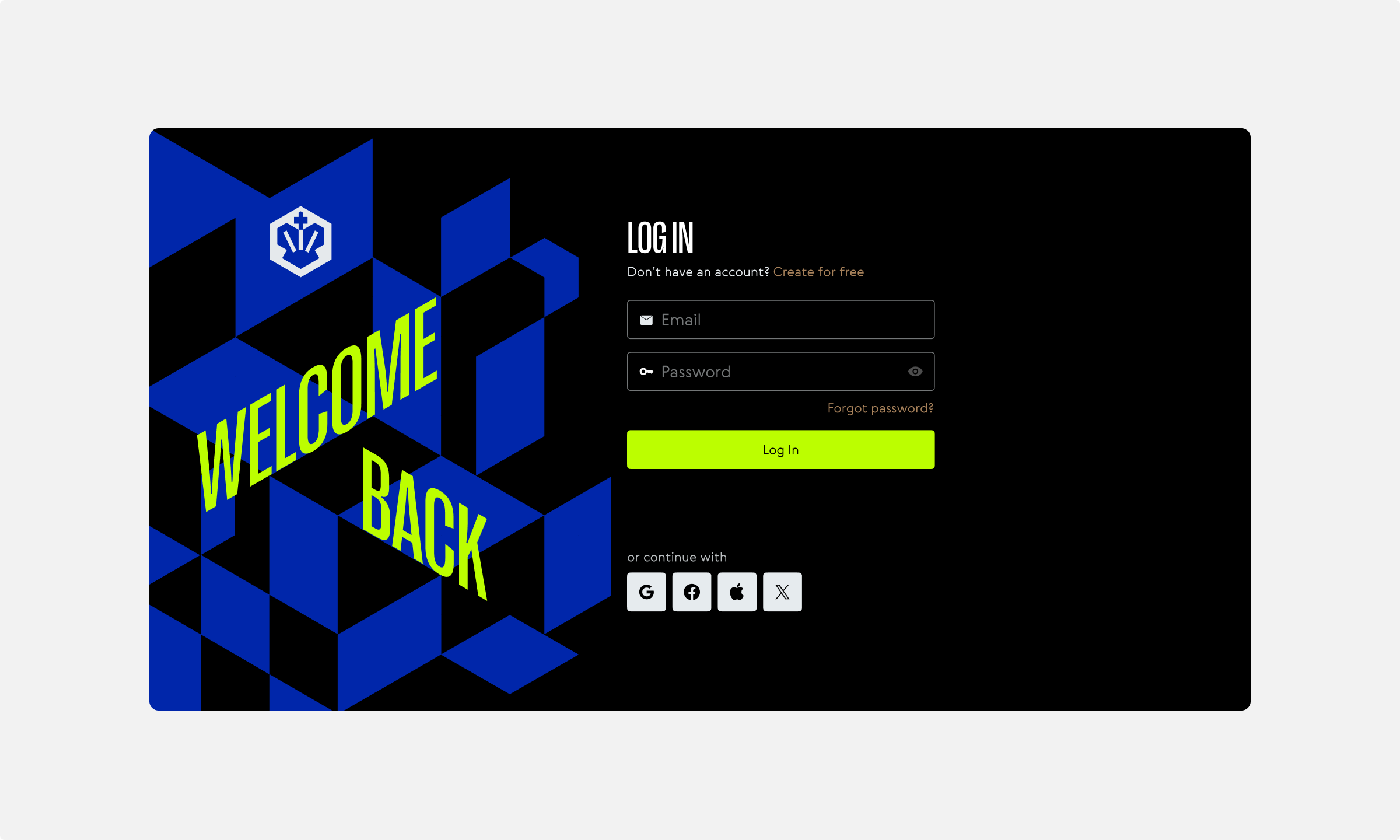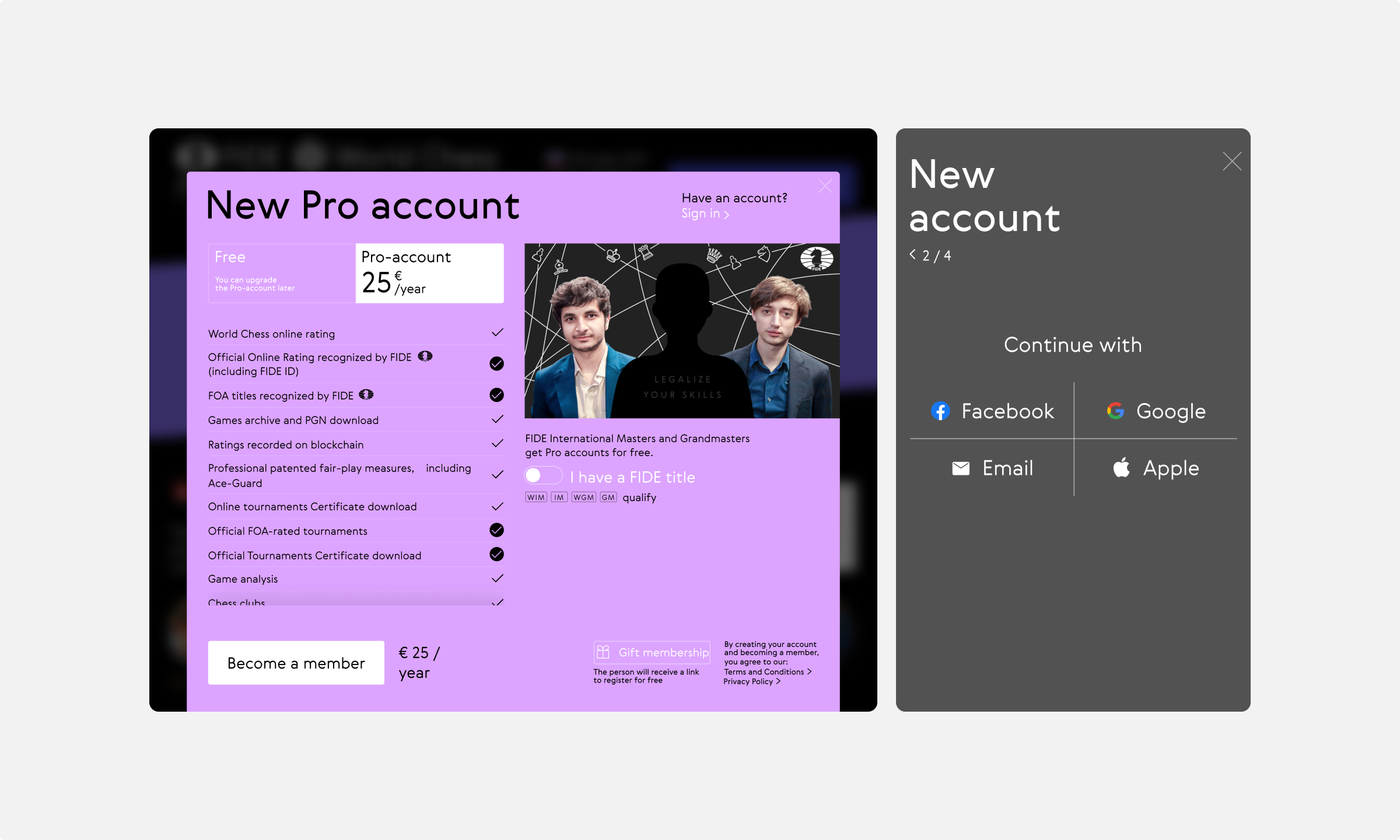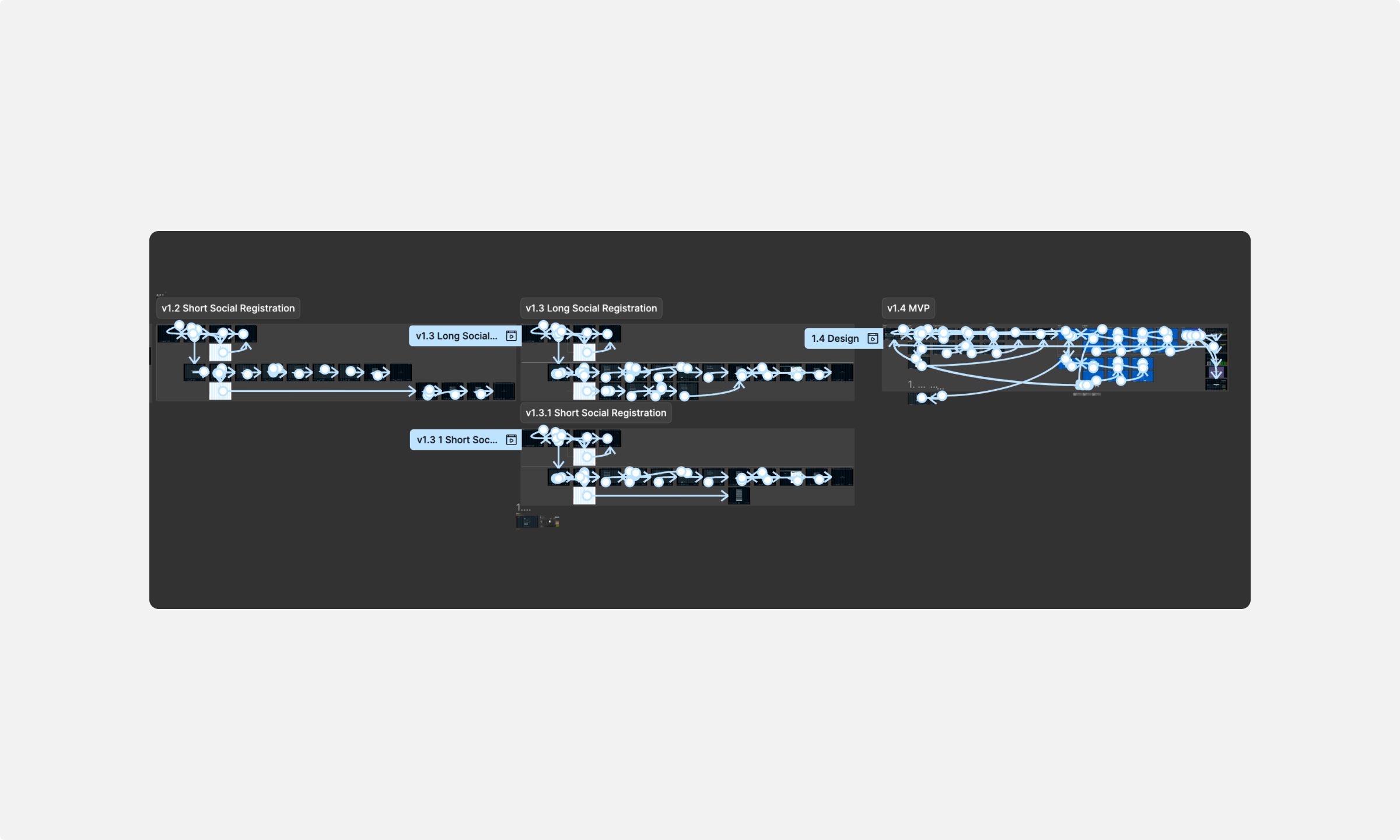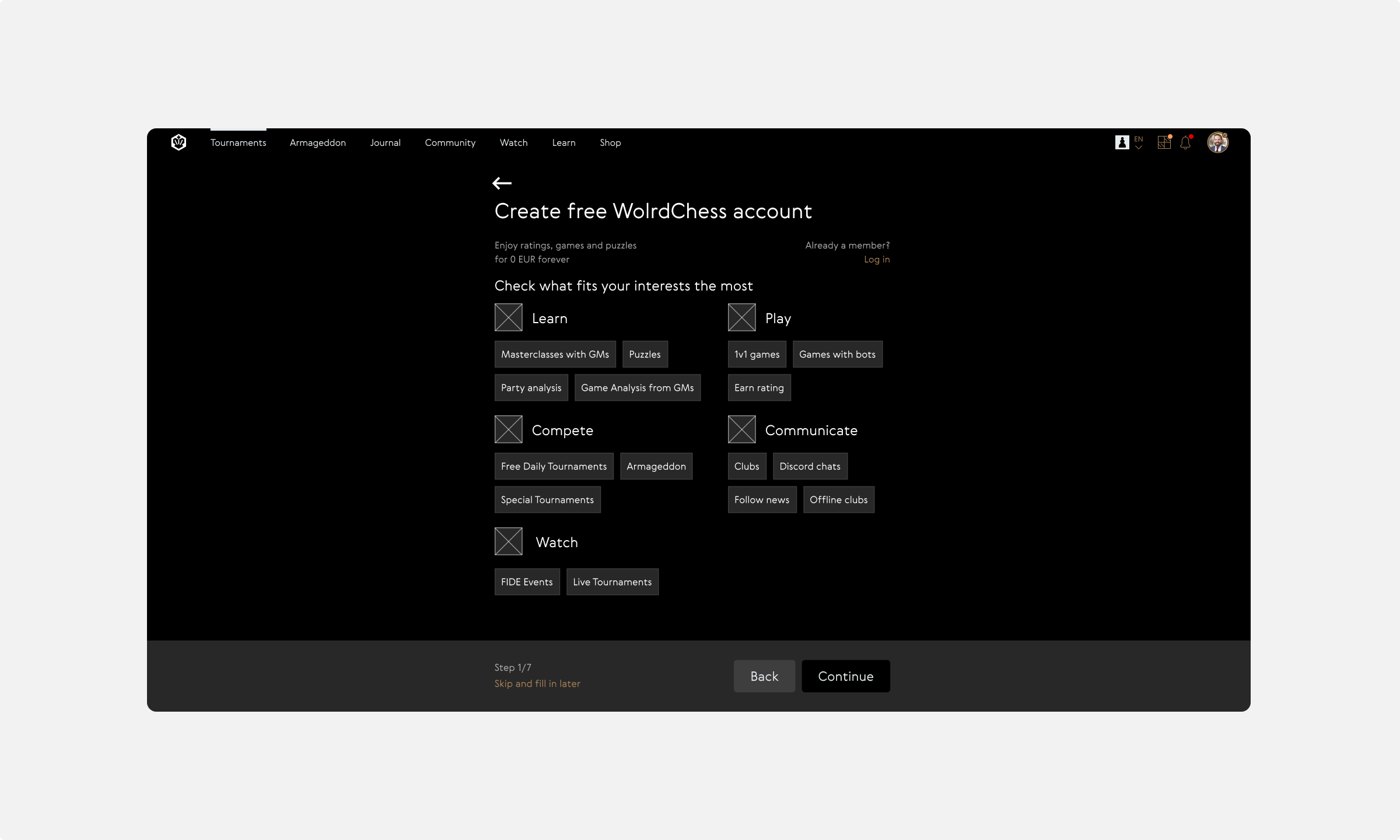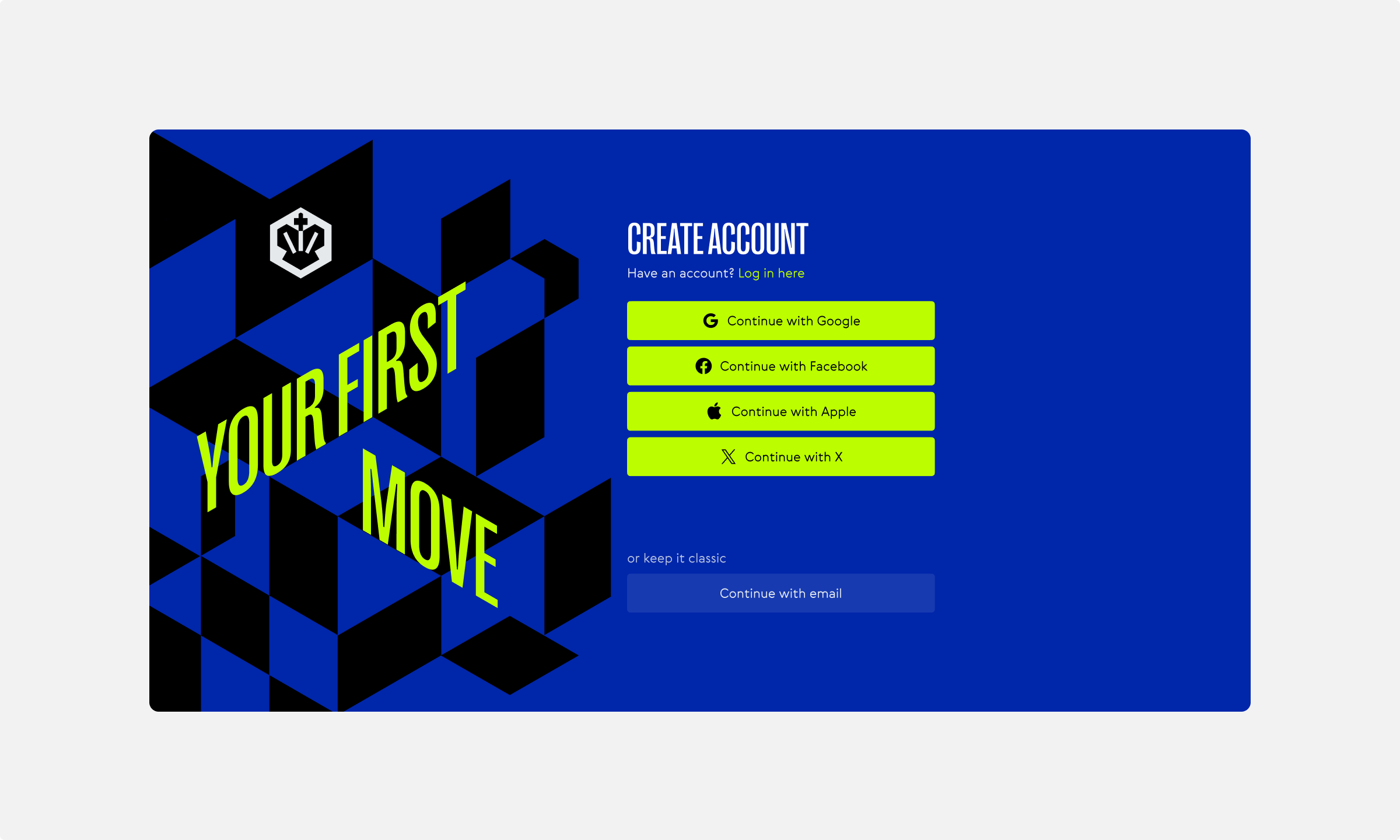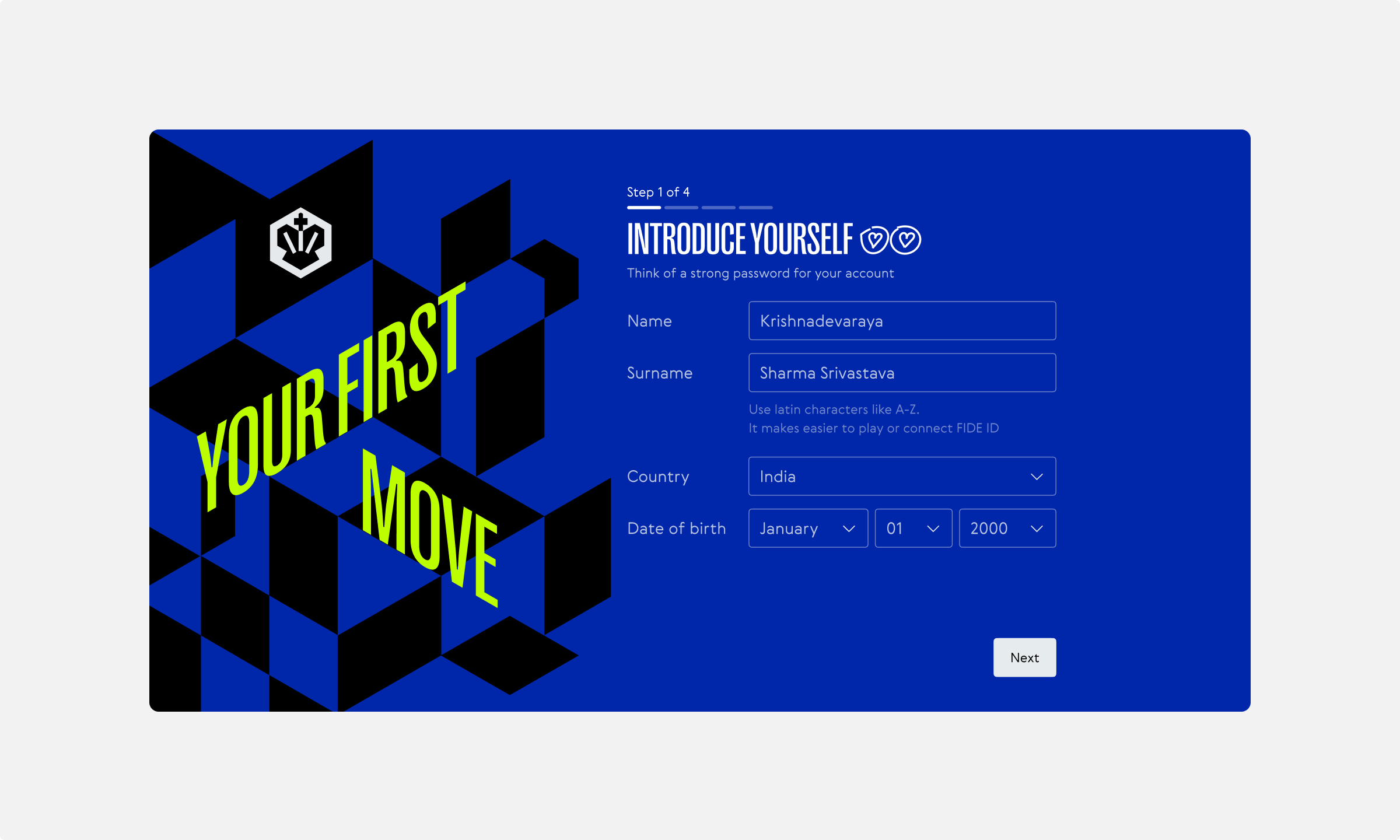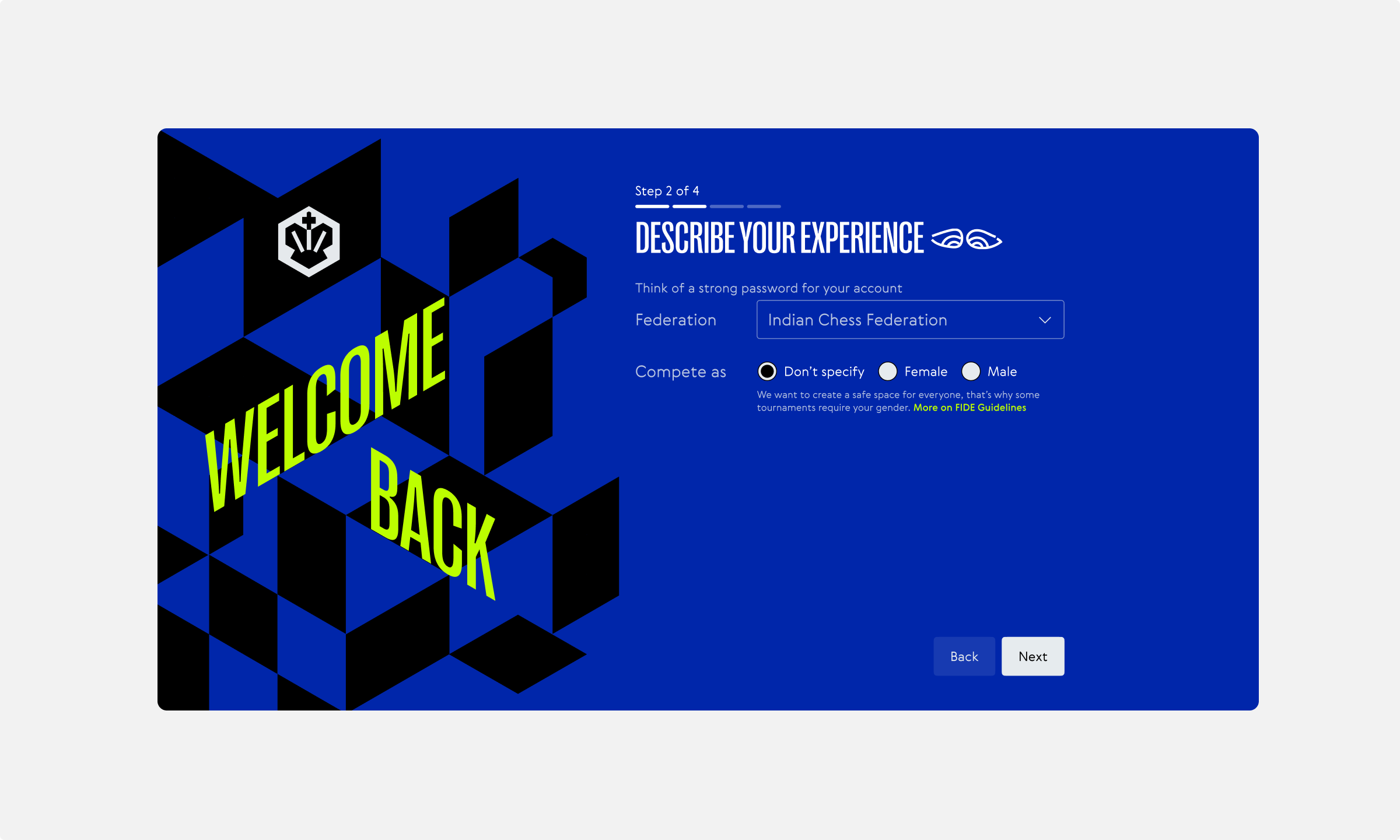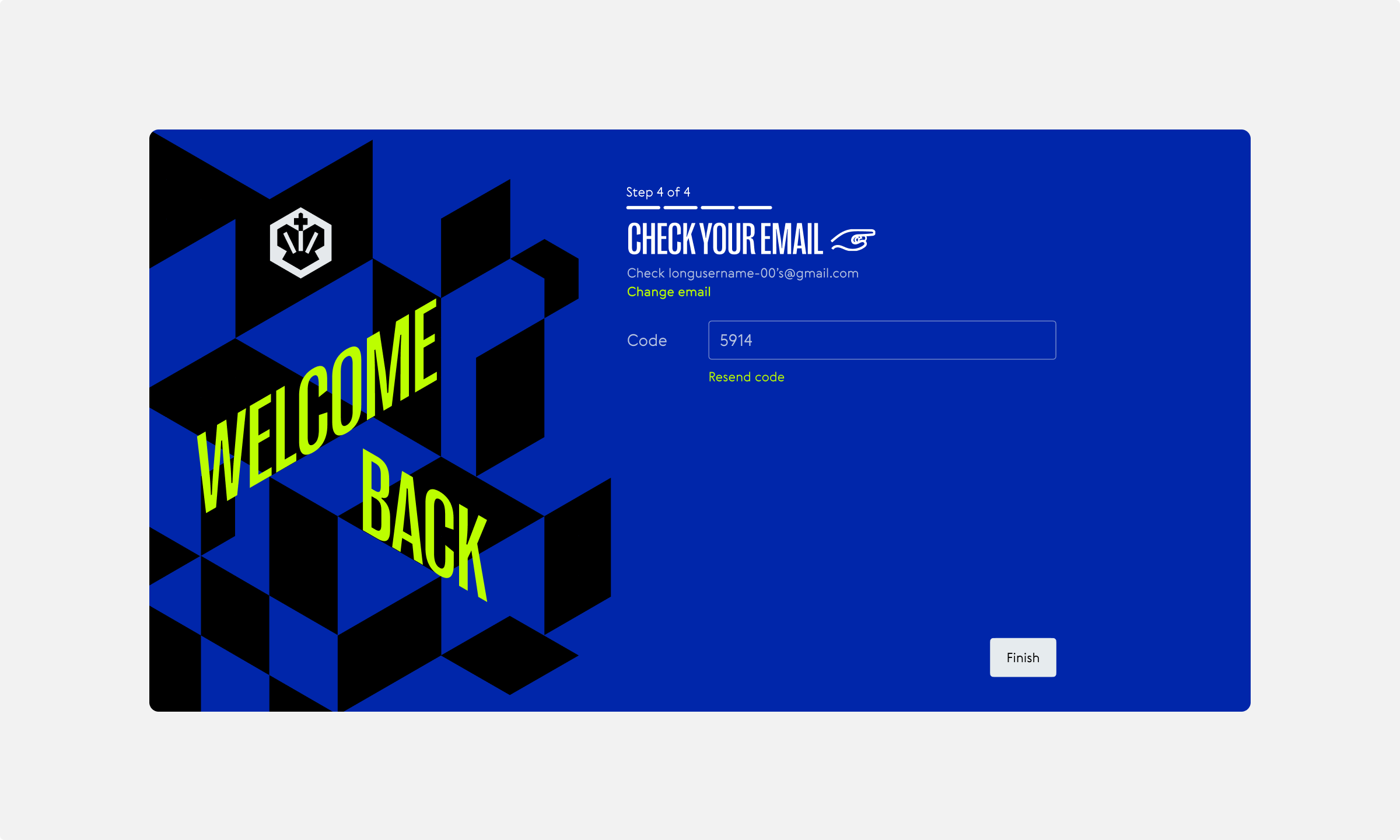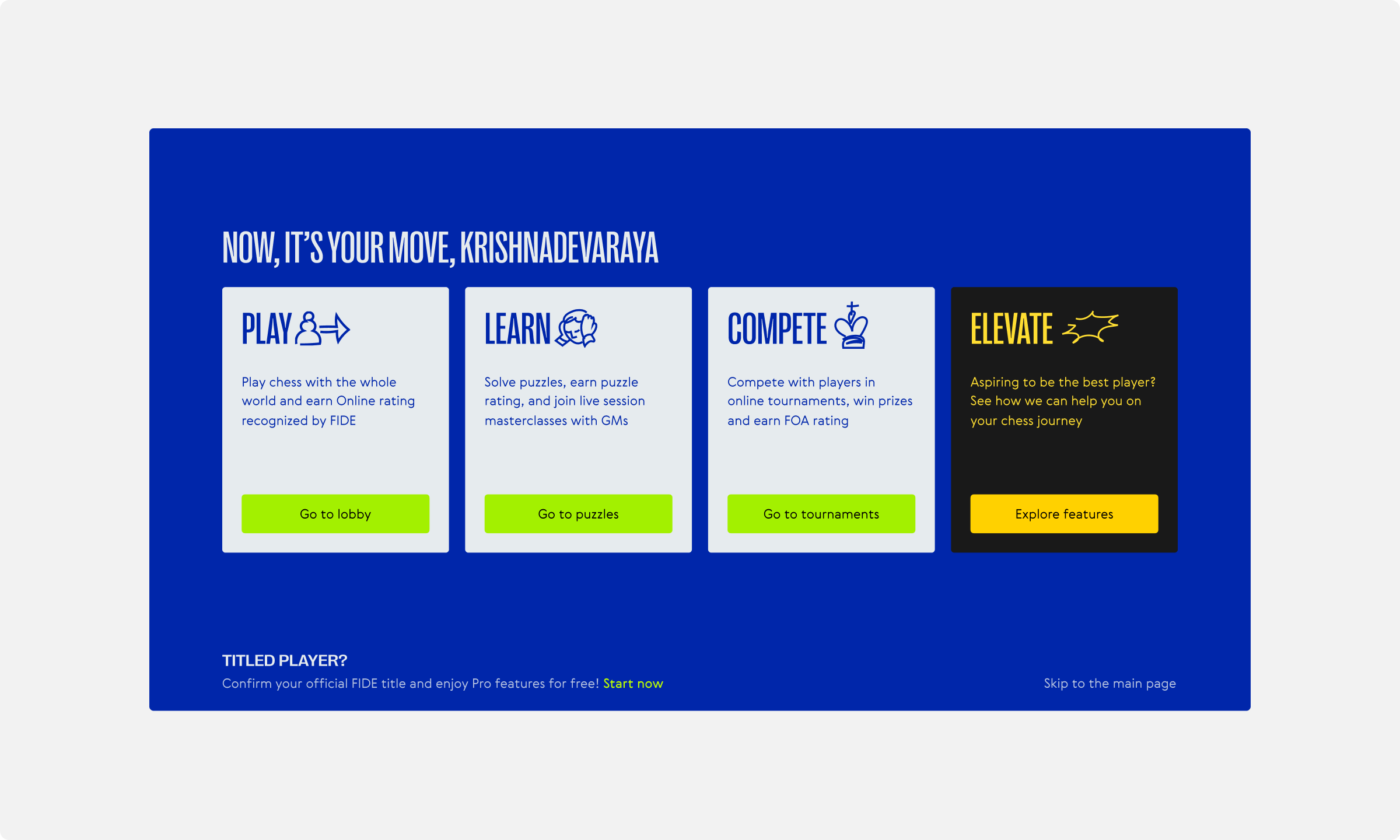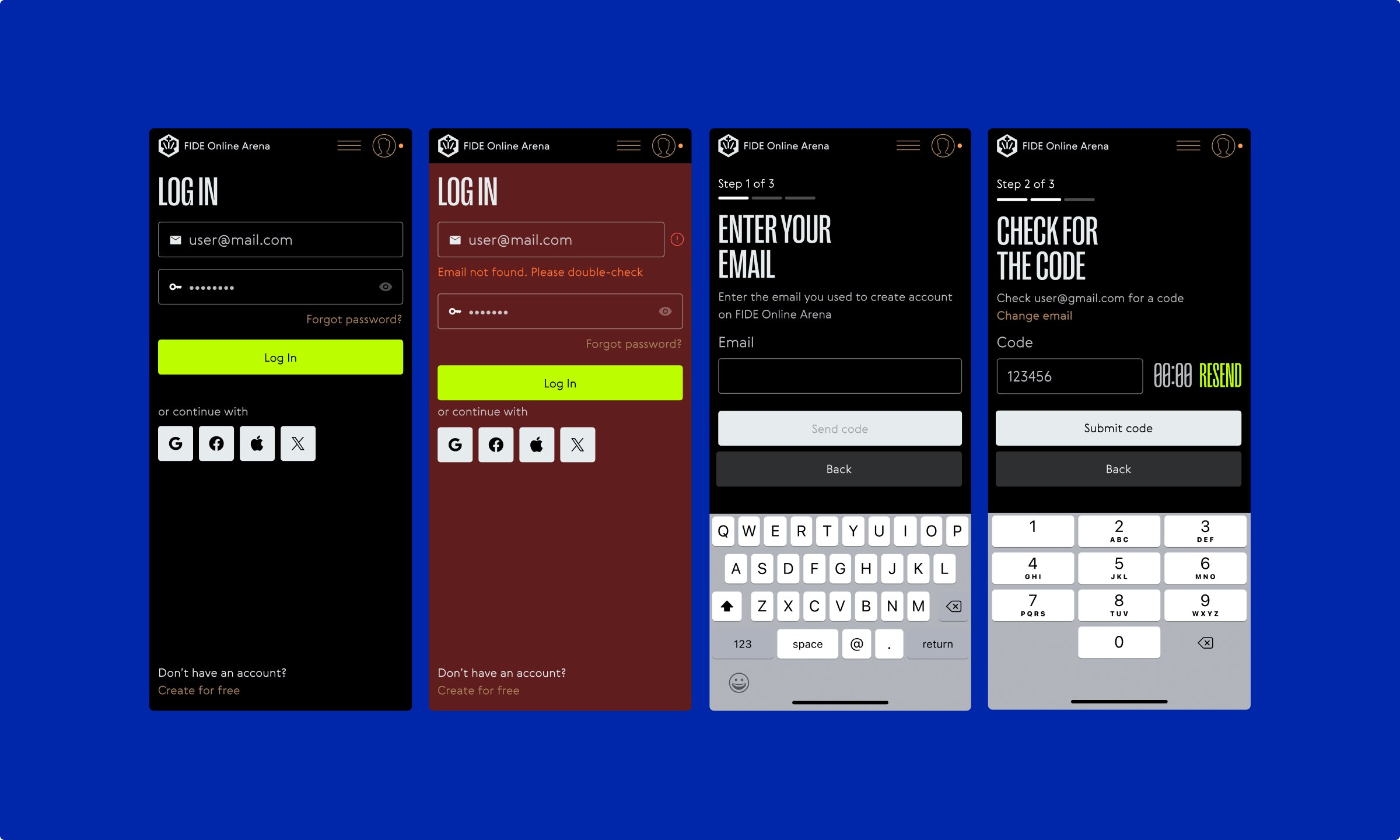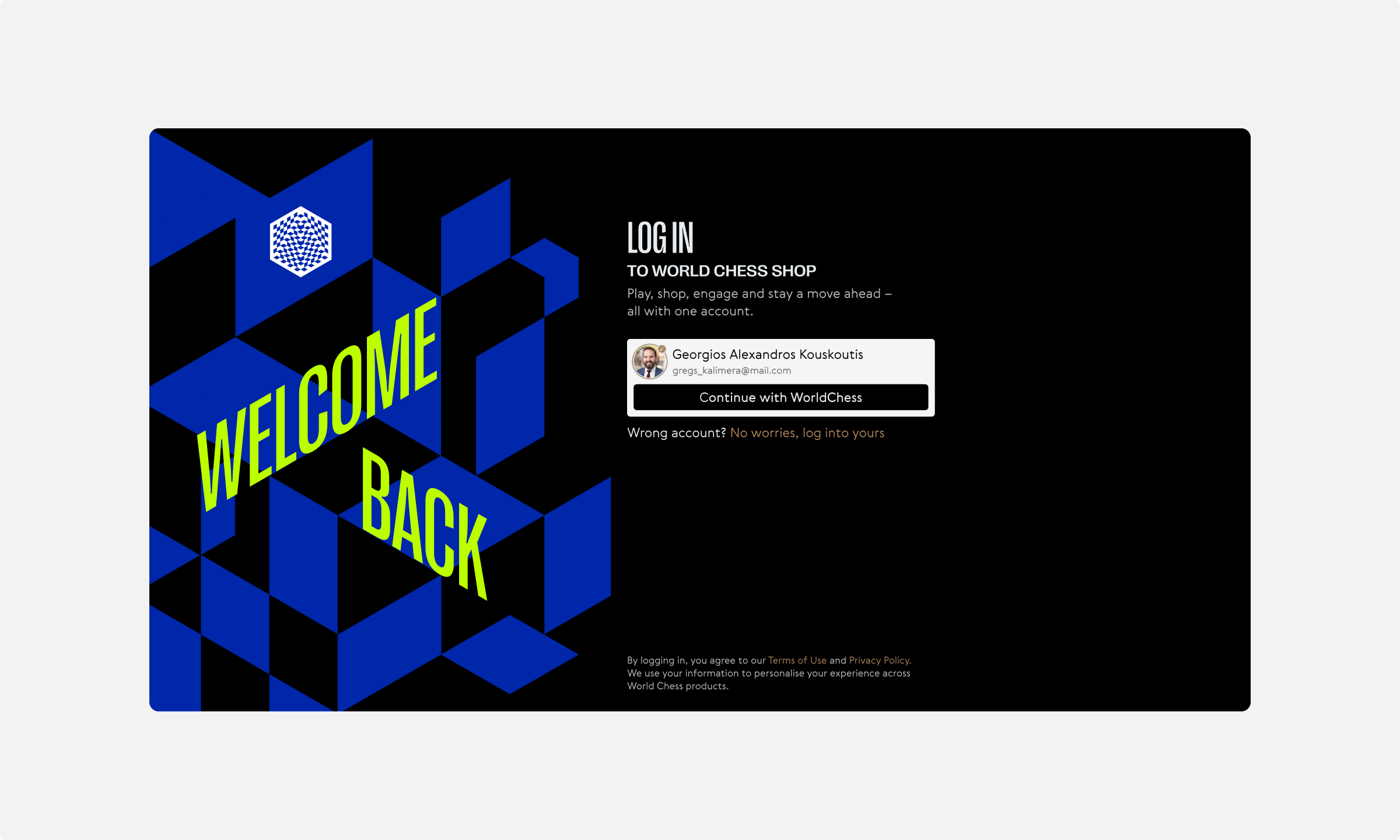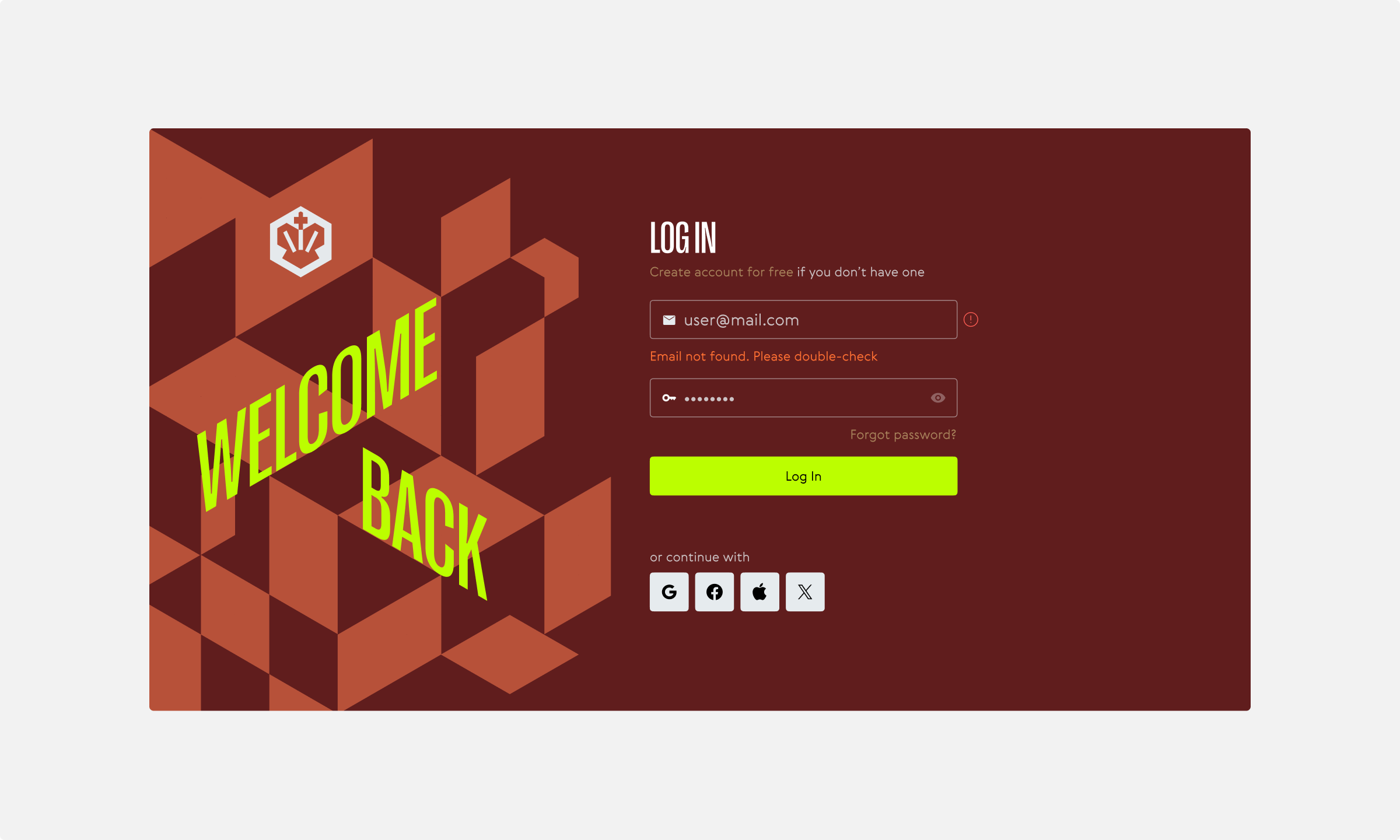When the company rebranded, onboarding became the first place that had to not only show users the platform’s new bold identity, but also solve current flow’s struggles: new players were getting blocked by the early paywall, stuck on the FIDE ID step or finishing registration without understanding what the platform actually offered.
I took ownership of redesigning onboarding end-to-end: from understanding support issues to rebuilding the flow, logic and visuals. The goal was to collect the information that actually helps us guide players into the parts of the platform they might care about.
Company
↳ WorldChess
Period
Jul 2023 – Aug 2024
Role
Product Designer
Keywords
User Acquisition
A bold new way to onboard into WorldChess
Previous version of signing up was asking a user to take too many actions at once.
Process & Goals
I set three practical goals for the redesign:
Move the FIDE ID step out of registration so people could actually finish sign-up;
Show players direct next steps instead of leaving them to figure out the platform alone;
Collect minimal but useful information (country, federation, gender) for tournaments and future targeting.
Early Prototype
The first prototype was focused on a more personalised onboarding. Players could select features they wanted to engage with (Play, Learn, Compete, Communicate, Watch), choose their experience level and even create kids’ or title-holder accounts. It worked internally, but it ended up being six to seven steps long and the back-end simply wasn’t ready for this level of segmentation. I had to simplify it.
Prototype B (MVP)
The MVP kept the basic idea but in a more realistic way. Social logins were prioritised with prefilled data, and the FIDE connection moved to post-signup. The “chess experience” step was simplified to federation and gender with clear copy for tournament eligibility. After confirming the account, players landed on a clean “Now it’s your move” screen with four direct paths: Game Screen, Puzzles, Tournaments and the Pricing page with PRO features.
Outcome
The new onboarding flow finally let players finish registration without running into the unexpected blockers. They weren’t hit with a paywall on the second step, didn’t get stuck on the FIDE ID screen, and actually saw where to go next instead of being left by themselves. It also fixed the constant password issues from social logins and gave the Support and Marketing teams a way to understand who was joining the platform and what their interests were.
The flow was approved for production and got positive feedback from the Product, QA and Support teams. Internally it became a reference for how we approach user entry points: keeping the logic simple, collecting only what we need and can handle now and make sure the user knows what to do after signing up.


